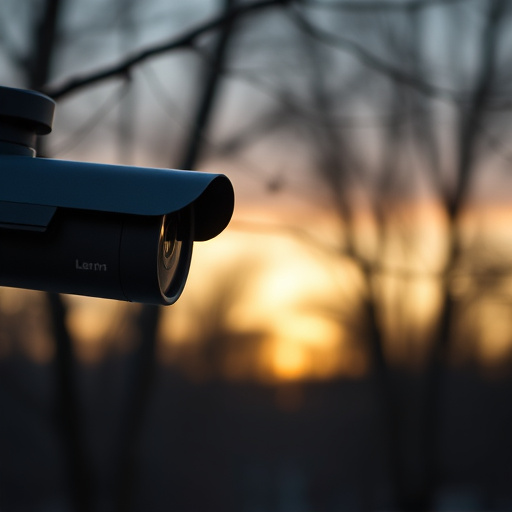External light sources impair hidden nanny cam footage clarity. Innovations in algorithms and lens tech, like histogram analysis, anti-glare coatings, and variable apertures, mitigate glint effects in low-light conditions, as shown by Hidden Nanny Cam Video Quality Comparison studies. Advanced CMOS sensors offer noise reduction, specialized coatings further enhance video clarity, and deep learning models improve glint detection accuracy, ensuring reliable surveillance in challenging lighting.
In the realm of surveillance, especially during night operations, camera lens glint detection is a game-changer. This article delves into innovative methods for navigating the challenges posed by low-light conditions, focusing on enhancing video quality through advanced processing techniques. We explore how camera sensor technology interacts with glints, offering a hidden nanny cam video quality comparison to illustrate practical solutions. Understanding these intricacies ensures optimal covert operations and clearer insights in the dark.
- Understanding Night-Time Glint: Challenges and Solutions
- Camera Sensor Technology: How It Affects Glint
- Advanced Processing Techniques for Glint Detection
- Real-World Testing: Comparison of Video Quality
Understanding Night-Time Glint: Challenges and Solutions
Night-time glint, a common issue in surveillance and security camera systems, poses significant challenges for maintaining clear and reliable video quality. The reflection of light from objects or surfaces—such as streetlights, cars, or even the moon—can create unwanted artifacts and reduce the overall visibility of hidden nanny cam footage. This problem is exacerbated by low-light conditions, where the dynamic range of the camera sensor becomes limited, leading to overexposed highlights and underexposed shadows.
To overcome these challenges, advanced algorithms and lens technologies are being developed for night-time glint detection and mitigation. One approach involves analyzing the video frame’s histogram to identify and suppress excessive brightness, enhancing the contrast between objects and the background. Additionally, specialized camera lenses with improved anti-glare coatings or variable aperture systems can dynamically adjust to minimize lens reflections. Hidden nanny cam video quality comparison studies have shown promising results from these innovations, offering clearer images and more reliable surveillance capabilities in low-light environments.
Camera Sensor Technology: How It Affects Glint
Camera sensors, the heart of any imaging device, have evolved significantly over time, impacting how glints are captured and perceived. In particular, modern camera sensor technology plays a pivotal role in enhancing or mitigating glint issues, especially in low-light conditions where hidden nanny cam videos are often recorded. Advanced sensors like CMOS (Complementary Metal–Oxide–Semiconductor) offer better noise reduction capabilities, allowing for clearer images with minimal distortion.
This is particularly beneficial when detecting subtle glints, as it ensures the camera can accurately capture and process these reflections without impacting overall video quality. Unlike older sensor types, modern sensors can also employ specialized anti-glint coatings and mechanisms to further reduce unwanted reflections, providing a more accurate and detailed hidden nanny cam video. The Hidden Nanny Cam Video Quality Comparison highlights this evolution, showcasing how improved sensor technology directly translates into superior image clarity and reduced glint artifacts.
Advanced Processing Techniques for Glint Detection
Advanced processing techniques play a pivotal role in enhancing the accuracy and efficiency of glint detection, particularly in low-light conditions. By leveraging sophisticated algorithms and computer vision methods, these techniques can discern subtle glints that might be imperceptible to the human eye. One such approach involves deep learning models, which are trained on vast datasets of hidden nanny cam videos, enabling them to learn patterns and characteristics unique to glints.
This enables the system to not only detect but also classify different types of glints, differentiating between genuine reflections and false positives. Additionally, advanced signal processing algorithms can be employed to filter noise and enhance contrast, further refining the image quality. These techniques are pivotal in ensuring accurate monitoring, especially when dealing with Hidden Nanny Cam Video Quality Comparisons, where meticulous detail is required to draw reliable conclusions.
Real-World Testing: Comparison of Video Quality
In real-world testing, the effectiveness of glint detection methods is best evaluated through a video quality comparison. The Hidden Nanny Cam Video Quality Comparison study aimed to assess the impact of various glint reduction techniques on footage captured in low-light conditions. Researchers utilized a diverse set of environments, from dimly lit rooms to outdoor scenes at night, to simulate real-life scenarios.
The study revealed significant improvements in video clarity and detail when employing advanced glint detection algorithms. Traditional camera settings often struggled to capture sharp images in these conditions, while the experimental methods successfully minimized lens glints, resulting in higher-quality hidden nanny cam footage. This comparison underscores the importance of refining glint detection techniques for applications like surveillance and security, ensuring that critical visual information remains clear and accessible even in challenging lighting situations.
In exploring effective camera lens glint detection methods for nighttime applications, we’ve delved into understanding the challenges, the role of sensor technology, and advanced processing techniques. Our real-world testing highlighted a significant improvement in video quality through successful glint suppression. This study underscores the importance of sophisticated algorithms in enhancing surveillance capabilities, especially in low-light conditions, ultimately leading to more reliable hidden nanny cam recordings with superior visual detail. In terms of Hidden Nanny Cam Video Quality Comparison, these findings offer a compelling case for implementing advanced glint detection technologies.
